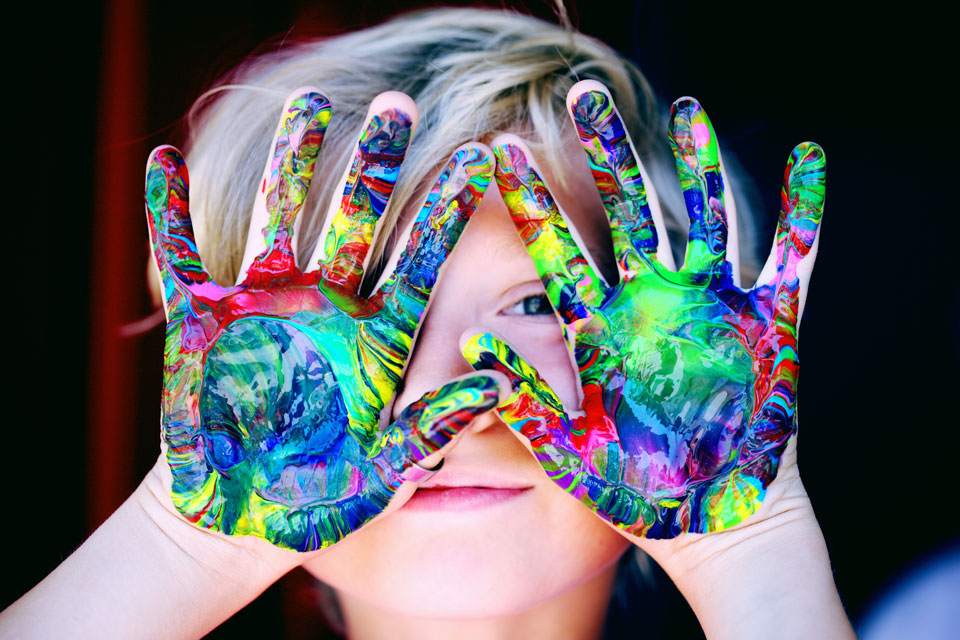Art is a brilliant “think-outside-of-the-box” subject. It promotes different ways of thinking; something which is perfect for children with high learning potential. While some children may have that little extra dimension to their artwork that makes it stand out as exceptional, all children can benefit from creative expression. Whether drawing for pleasure, or enjoying designing online, art offers imaginative freedom, with no right or wrong interpretations. For children with high learning potential, in need of a creative and relaxing outlet, art can be magical!
Let them Draw if They Really Want to
While this may seem an obvious statement, homework and extracurricular activities often get in the way, and a child’s inner drive to create art can be suppressed. Children who are visual thinkers and the more visually gifted often prefer drawing to other forms of entertainment, and will happily engage in it for considerable time alone. Encourage children to take ownership of their own creations, rather just drawing to order or to someone else’s ideas, but also remember that copying artwork is a great way to learn techniques.
Pack a notebook so that a child can doodle in a café, on the bus or during school break – they could be inspired to draw by something they’ve seen. Like a diary, it’s their own personal record of thoughts and exploration of ideas, which they may revisit one day.
From Classic to Contemporary Appreciation
Discuss and appreciate the work of more accomplished artists together. Whether you’re talking about Van Gogh or Banksy, emphasising the process of their art-making will be informative. Use this time not only to look at the art style, art movement, artworks, art meaning and artist, but also to consider it within the wider context of the history in which these artworks were developed.
Feed their Imaginative Creativity
This costs nothing! Tell a child about beautiful places, or colourful life stories. They may want to turn them into paper figures, family portraits of the grandparents… anything! Rather than just praising them, sometimes ask them to explain their interpretations to you – you’ll both gain insight into how their thinking works.
Price Savvy Materials
Poster paint, crayons and art paper can be bought affordably for younger children. Older children wanting to develop their talent for art should look for discounts on brands such as Daniel Smith watercolours, Derwent drawing pencils and Wallace Seymour acrylics.
Playing with Colour, Movement, and Film
Watercolours and pastels are great for sketching but can be tricky for very young artists. Brush pens make a good alternative especially for such artwork as manga/ general cartoons. Help develop their sequencing and scriptwriting using Smartphone and iPad apps which are good for animation, films and creating designs. For great ideas on editing videos from a Potential Plus UK Young Reporter see Making YouTube Videos and visit Multimedia Inspiration – Using Film to Inspire Cross-Curricular HLP Learning for ideas on how to use film to inspire learning.
Photography gives children a chance to take personalised and spontaneous snapshots of life. If they don’t have access to a mobile, why not dig out an old digital camera that is gathering dust for them instead and enjoy watching life from their point of view.
Places to Visit
If you are looking for inspiration from something a little further afield than your local park, then here are some great places that are free to visit: the Yorkshire Sculpture Park, Whitworth Art Gallery Manchester, Falmouth Art Gallery, the Design Museum, Cartoon Museum, the Wellcome Collection, the Courtauld Institute and Glasgow’s Mural trail. Pick places which have tactile exhibits for younger children, plus a chance to sit and talk freely. Many venues like The Pitt Rivers Museum in Oxford, or the National Gallery in London will offer free or low-cost family activities.
Consider Local Impact
Try to see as many different types of art as you can. After initial prompting, let your child take the lead in discussing textures, patterns and colours used. There may be murals in your part of the city, or the form of an unusual building. How do these contribute to the feel of the area? See our blog Surprising Shapes and Higher Thinking Skills for some inspiration.
Create an Exhibition
Help your child enjoy showing off their work on more than just the fridge door! Cheap plain black or white frames in a range of sizes can set off artwork and can be changed around on a regular basis. If the art is designed to appeal to other visiting children, why not place it at their eye level?
Arts Award
The national Arts Award scheme is a fantastic resource that offers challenge for ages 5-25. Young people aged 11+ able to earn Bronze, Silver and Gold awards via workshops and activities through multiple centres around the UK: https://www.artsaward.org.uk/
Clubs and Courses
- The National Saturday Club (nationwide) offers free expert tuition and masterclasses in Art and Design for 13-16s year old who show talent talent https://saturday-club.org/national-saturday-club/
- Central St Martins offers free online summer courses for teenagers wishing to experience art college. https://www.arts.ac.uk/colleges/central-saint-martins/courses/short-courses/courses-for-teenagers
- FutureLearn offers free online courses in creative arts and media run by universities from around the world. Young people need to be aged 13+ to have an account in their own right; younger children would need to join with an adult. https://www.futurelearn.com/subjects/creative-arts-and-media-courses
Save the Scrap
What’s waste to you can be art for them. Cardboard boxes, plastic bottles, string, wire, ribbons: all are potentially useful and cheap materials. Salt dough is a much cheaper alternative to clay. Your child will also learn that to see one object is to potentially create another. For ideas see https://www.royalacademy.org.uk/article/family-how-to-make-recycled-sculpture-art-kids-phyllida-barlow-sustainable
Try Out Textiles
Use a variety of fabrics for collages, wall hangings and headdresses; customise them using feathers, sequins and stick-on jewels or why not get high tech and create sewn circuits as seen at https://www.exploratorium.edu/tinkering/projects/sewn-circuits
“It’s Rubbish”
When a piece of artwork doesn’t turn out as planned, children can feel disillusioned – especially as artistic children may show perfectionistic traits and may compare themselves to others. Point out that technical ability with different art material and mediums takes time, that they should enjoy seeing what others can do, but that they shouldn’t let this deter them from doing things themselves, they will develop their own abilities in time through practice.
An Artistic Child’s Personality
Many profoundly able artists will go as far as living their art and needing it to be a part of them, with intensely personal work showing their need to visually express. Enable a child by helping them to develop their own art style and themes, If you’re not artistic yourself, you can still offer meaningful input without being an expert.

About the author: Sarah Box is a writer and editor for Potential Plus UK. She has also written about France for national publications, loves languages and hopes one day to learn Mandarin.






